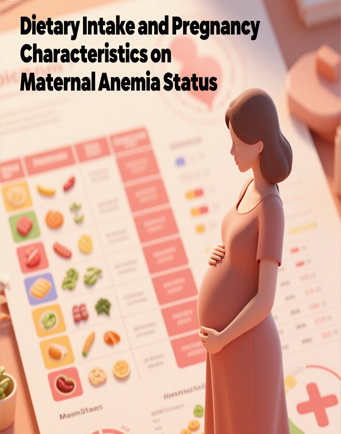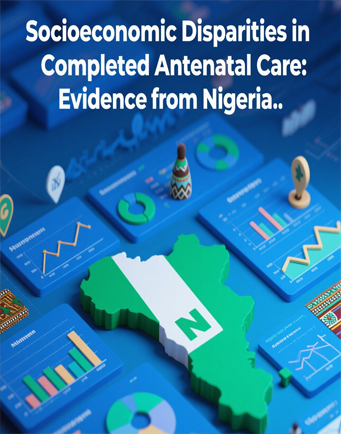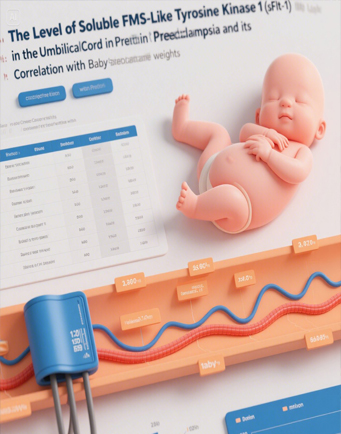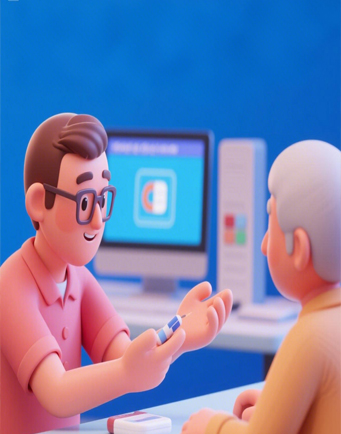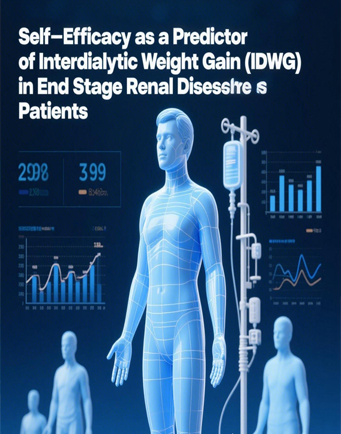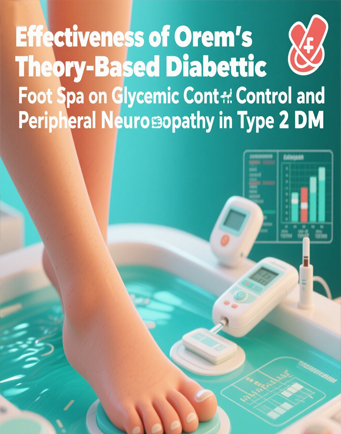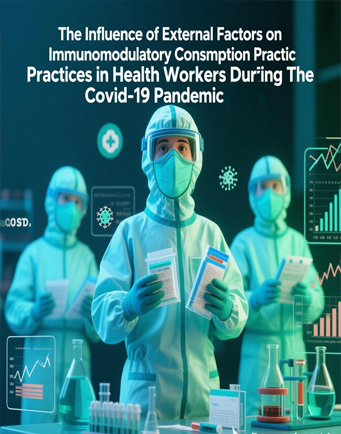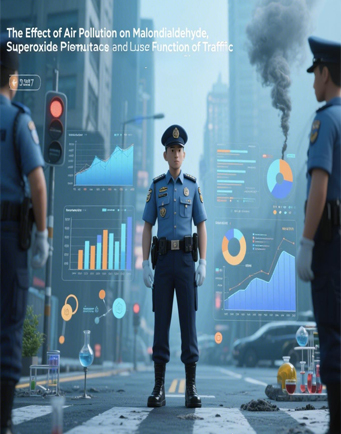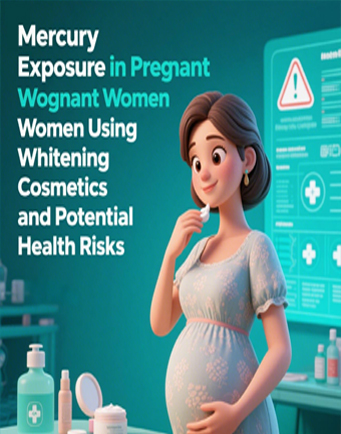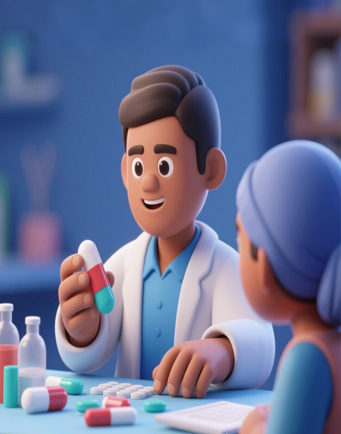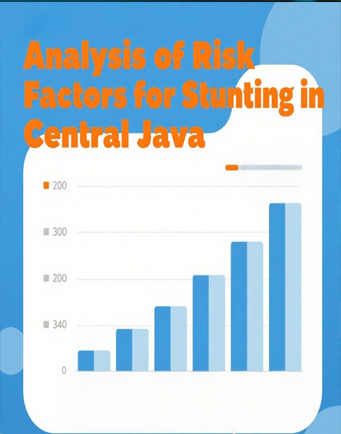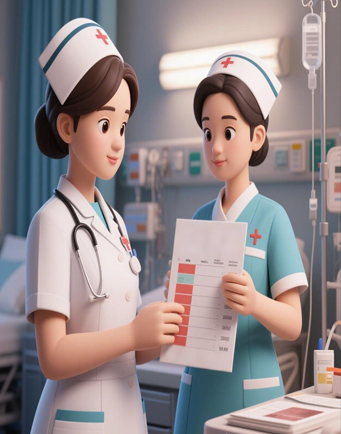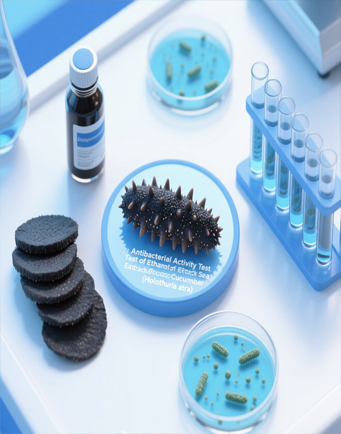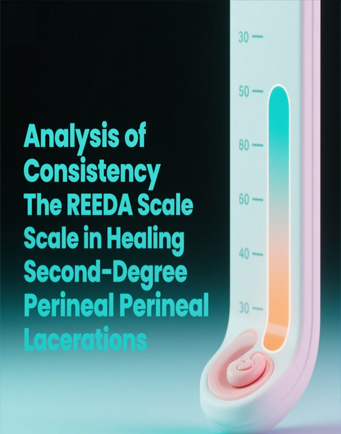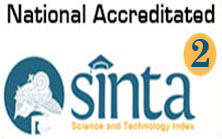Determinants of Anemia among Female Adolescents in Maubesi Health Center, North Central Timor District, East Nusa Tenggara

Downloads
Anemia in Indonesia remains a significant public health concern, especially among adolescents. Several diverse factors contribute to anemia in this age group, including suboptimal nutritional intake habits. This study aimed to determine the factors associated with anemia among female adolescents in Lanaus Village, Maubesi District. This was a cross-sectional study conducted in April 2023. The population consisted of all female adolescents in Lanaus Village, totaling 171 individuals. The sample size was calculated using Slovin’s formula, resulting in 63 respondents. Purposive random sampling was used as the sampling technique, and participants were selected based on predefined inclusion and exclusion criteria. The research instrument was a structured questionnaire. Data analysis included univariate analysis, chi-square tests, and logistic regression. The study found a significant association between anemia and the following factors: compliance with iron supplementation (p-value = 0.002), socioeconomic status (p-value = 0.008), and breakfast habits (p-value = 0.000). On the other hand, there was no significant relationship between BMI and anemia (p-value = 0.096). Among the significant factors, compliance with iron supplementation and breakfast habits was most strongly associated with anemia. Breakfast habits were identified as the dominant factor influencing anemia among female adolescents in Lanaus Village, with a p-value of 0.019 and an odds ratio (OR) of 15.427. Adolescents who did not regularly eat breakfast were found to be 15.42 times more likely to experience anemia. It is essential for adolescents to understand the importance of regular breakfast consumption and adherence to iron supplementation as key strategies in the prevention and control of anemia.
Akuiyibo, S., Anyanti, J., Idogho, O., Piot, S., Amoo, B., Nwankwo, N., & Anosike, N. (2021). Impact of peer education on sexual health knowledge among adolescents and young persons in two North Western states of Nigeria. Reproductive Health, 18, 204. https://doi.org/10.1186/s12978-021-01251-3
Deivita, Y., Syafruddin, S., Andi Nilawati, U., Aminuddin, A., Burhanuddin, B., & Zahir, Z. (2021). Overview of anemia: risk factors and solution offering. Gaceta Sanitaria, 35, S235–S241. https://doi.org/10.1016/j.gaceta.2021.07.034
Dewi, E. S., Mardhiati, R., & Musniati, N. (2023). Factors associated with the incidence of anemia in girls at SMPN 17 Tangerang in 2022. Journal of Biomedika and Health, 6(1), 13–25. https://doi.org/10.18051/JBiomedKes.2023.v6.13-25
Ekasanti, I., Adi, A. C., Yono, M., Nirmala G, F., & Isfandiari, M. A. (2020). Determinants of anemia among early adolescent girls in Kendari City. Amerta Nutrition, 4(4), 271. https://doi.org/10.20473/amnt.v4i4.2020.271-279
Gebreyesus, S. H., Endris, B. S., Beyene, G. T., Farah, A. M., Elias, F., & Bekele, H. N. (2019). Anaemia among adolescent girls in three districts in Ethiopia. BMC Public Health, 19,1- 92. https://doi.org/10.1186/s12889-019-6422-0
Habtegiorgis, S. D., Petrucka, P., Telayneh, A. T., Getahun, D. S., Getacher, L., Alemu, S., & Birhanu, M. Y. (2022). Prevalence and associated factors of anemia among adolescent girls in Ethiopia: A systematic review and meta-analysis. PLoS One, 17(3), e0264063. https://doi.org/10.1371/journal.pone.0264063
Handayani, D., Pamungkasari, E. P., & Sulaeman, E. S. (2019). Application of path analysis on incidence of anemia in female adolescents. Jurnal Gizi Dan Pangan, 14(1), 37–44. https://doi.org/10.25182/jgp.2019.14.1.37-44
Indrawati, A. A., Furqan, M., & Arumsari, I. (2023). Relationship between consumption of iron (Fe) and breakfast habits with the incidence of anemia in adolescent girls at SMP Negeri 6 Karawang Barat. Proceedings of the 4th International Conference on Social Determinants of Health, 136–141. https://doi.org/10.5220/0011672900003608
Jain, D., Grover, K., & Choudhary, M. (2020). Study on breakfast consumption pattern and its outcomes in relation to hematological and body composition indices among adolescent girls. Ecology of Food and Nutrition, 59(6), 675-691. https://doi.org/10.1080/03670244.2020.1778474
Lauryn, J., Joprang, F. S., Kurniadi, A., Leonardo, Rinaldi, F. X., Erlina, Gavriel, G., & Singgih. (2021). View of effectivity of iron supplementation with and without vitamin c for increasing hemoglobin levels among women aged 16-21 years old. Sriwijaya Journal of Medicine, 5(1), 18–24. https://doi.org/10.32539/SJM.v5i1.125
Manik, R. M., & Simamora, H. G. (2019). Factor Related With the Anemia Incidence Of Adolescent Girl in Private High School Santa Lusia Medan, 2019. Journal of Midwifery, 4(2), 33-38. https://doi.org/10.25077/jom.4.2.33-38.2019
McLoughlin, G. (2020). Intermittent iron supplementation for reducing anaemia and its associated impairments in adolescent and adult menstruating women. JBI Evidence Implementation, 18(2), 274-275. https://doi.org/10.1002/14651858.CD009218.pub3
Meilani, N., & Setiyawati, N. (2023). Effectiveness of Directly Observed Treatment (DOT) for Iron Tablet Supplements Consumption Among Female Senior High School Students. Kesehatan Masyarakat KEMAS, 18(3), 375–382. https://doi.org/10.15294/kemas.v18i3.38594
Ministry of Health Republic of Indonesia. (2018). Laporan Nasional Riset Kesehatan Dasar 2018. Ministry of Health Republic of Indonesia.
Mohammed, S. H., Larijani, B., & Esmaillzadeh, A. (2019). Concurrent anemia and stunting in young children: prevalence, dietary and non-dietary associated factors. Nutrition journal, 18, 1-10. https://doi.org/10.1186/s12937-019-0436-4
Novelia, S., Rukmaini, & Purnama Sari, I. (2022). The analysis of factors associated with anemia among adolescent girls. Nursing and Health Sciences Journal (NHSJ), 2(3), 266–273. https://doi.org/10.53713/nhs.v2i3.142
Omotayo, M. O., Abioye, A. I., Kuyebi, M., & Eke, A. C. (2021). Prenatal anemia and postpartum hemorrhage risk: A systematic review and meta-analysis. Journal of Obstetrics and Gynaecology Research, 47(8), 2565–2576. https://doi.org/10.1111/jog.14834
Oumer, A., & Hussein, A. (2019). Pregnant mothers’ knowledge, attitude and practice towards preventions of iron deficiency anemia in Harar Town, Ethiopia. International Journal of Public Health Science, 8(2), 202–210. https://doi.org/10.11591/ijphs.v8i2.19476
Paoli, A., Tinsley, G., Bianco, A., & Moro, T. (2019). The influence of meal frequency and timing on health in humans. Nutrients, 11(4), 1–19. https://doi.org/10.3390/nu11040719
Rangkuti, S. (2020). The effect of family knowledge, attitude and income on anemia in adolescents. Science Midwifery, 8(2), 66–69. Retrieved from: http://midwifery.iocspublisher.org/index.php/midwifery/article/view/137
Ropitasari, R., Kartika F, F., Fauziah R, R., & Anggarini, S. (2020). Breakfast and hemoglobin level among female junior high school student in Surakarta, Central Java. The 7th International Conference on Public Health, 124–130. https://doi.org/10.26911/the7thicph.02.52
Salsabil, I. S., & Nadhiroh, S. R. (2023). Literature review: Correlation between intake of protein, vitamin c, and iron with anemia among adolescents girls. Media Gizi Kesmas, 12(1), 516–521. https://doi.org/10.20473/mgk.v12i1.2023.516-521
Sari, P., Herawati, D. M. D., Dhamayanti, M., & Hilmanto, D. (2022). Anemia among adolescent girls in West Java, Indonesia: Related factors and consequences on the quality of life. Nutrients, 14(18), 1–13. https://doi.org/10.3390/nu14183777
Sari, D. P., Ridmadhanti, S., Erda, R., Margiyanti, N. J., Handayani, T. Y., & Tarigan, R. A. (2020). Deteksi Dini Anemia pada Remaja di Pulau Nguan Kecamatan Galang Kota Batam Tahun 2020. Jurnal Pelayanan Dan Pengabdian Masyarakat (Pamas), 4(1), 1-8. https://doi.org/10.52643/pamas.v4i1.767
Silalahi, V., Aritonang, E., & Ashar, T. (2016). Potential for nutrition education in improving nutrition intake in adolescent which anemia in Medan. Jurnal Kesehatan Masyarakat, 11(2), 295-301. https://doi.org/10.15294/kemas.v11i2.4113
Silitonga, H. T. H., Salim, L. A., Nurmala, I., & Wartiningsih, M. (2023). Compliance of iron supplementation and determinants among adolescent girls: A Systematic Review. Iranian Journal of Public Health, 52(1), 37–48. https://doi.org/10.18502/ijph.v52i1.11664
Stoffel, N. U., von Siebenthal, H. K., Moretti, D., & Zimmermann, M. B. (2020). Oral iron supplementation in iron-deficient women: How much and how often?. Molecular aspects of medicine, 75, 100865. https://doi.org/10.1016/j.mam.2020.100865
Swamilaksita, P. D., Amir, H., Suryani, F., & Livana, P. (2022). Effective methods to prevent or treat anemia in adolescent women. International Journal of Health Sciences, 6(S4), 440–452. https://doi.org/10.53730/ijhs.v6ns4.5528
Triharini, M., Tanfidiah, E., Wahyuni, E. D., Dewi, Y. S., & Gouda, A. D. K. (2023). The correlation between knowledge, family income and peer support with anaemia prevention behaviour among adolescent girls. Journal of the Pakistan Medical Association, 73(2), S67–S70. https://doi.org/10.47391/JPMA.Ind-S2-16
Ulfah, N. H., & Wongsasuluk, P. (2022). The consumption of Indonesian local food and its relationship with body mass index among female university students. International Journal of Public Health Science, 11(3), 911–919. https://doi.org/10.11591/ijphs.v11i3.21618
World Health Organization. (2021). Adolescents Health. World Health Organization. Retrieved from: https://www.who.int/health-topics/adolescent-health#tab=tab_1
World Health Organization. (2023). Anaemia. World Health Organization. Retrieved from: https://www.who.int/health-topics/anaemia#tab=tab_1
Youssry, M. A., Radwan, A. M., Gebreel, M. A., & Patel, T. A. (2018). Prevalence of maternal anemia in pregnancy: The effect of maternal hemoglobin level on pregnancy and neonatal outcome. Open Journal of Obstetrics and Gynecology, 8(7), 676–687. https://doi.org/10.4236/ojog.2018.87072
Yuliani, M., Oktafiani, H., & Hayati, N. (2020). Hemoglobin levels of female students based on Fe consumption and breakfast habits. Journal of Global Research in Public Health, 5(2), 195–203. https://doi.org/10.30994/jgrph.v5i2.280
Zhu, Z., Sudfeld, C. R., Cheng, Y., Qi, Q., Li, S., Elhoumed, M., Yang, W., Chang, S., Dibley, M. J., Zeng, L., & Fawzi, W. W. (2021). Anemia and associated factors among adolescent girls and boys at 10–14 years in rural western China. BMC Public Health, 21(1), 1–14. https://doi.org/10.1186/s12889-021-10268-z
Copyright (c) 2025 JURNAL INFO KESEHATAN

This work is licensed under a Creative Commons Attribution-NonCommercial-ShareAlike 4.0 International License.
Copyright notice
Ownership of copyright
The copyright in this website and the material on this website (including without limitation the text, computer code, artwork, photographs, images, music, audio material, video material and audio-visual material on this website) is owned by JURNAL INFO KESEHATAN and its licensors.
Copyright license
JURNAL INFO KESEHATAN grants to you a worldwide non-exclusive royalty-free revocable license to:
- view this website and the material on this website on a computer or mobile device via a web browser;
- copy and store this website and the material on this website in your web browser cache memory; and
- print pages from this website for your use.
- All articles published by JURNAL INFO KESEHATAN are licensed under the Creative Commons Attribution 4.0 International License. This permits anyone to copy, redistribute, remix, transmit and adapt the work provided the original work and source is appropriately cited.
JURNAL INFO KESEHATAN does not grant you any other rights in relation to this website or the material on this website. In other words, all other rights are reserved.
For the avoidance of doubt, you must not adapt, edit, change, transform, publish, republish, distribute, redistribute, broadcast, rebroadcast or show or play in public this website or the material on this website (in any form or media) without appropriately and conspicuously citing the original work and source or JURNAL INFO KESEHATAN prior written permission.
Permissions
You may request permission to use the copyright materials on this website by writing to jurnalinfokesehatan@gmail.com.
Enforcement of copyright
JURNAL INFO KESEHATAN takes the protection of its copyright very seriously.
If JURNAL INFO KESEHATAN discovers that you have used its copyright materials in contravention of the license above, JURNAL INFO KESEHATAN may bring legal proceedings against you seeking monetary damages and an injunction to stop you using those materials. You could also be ordered to pay legal costs.
If you become aware of any use of JURNAL INFO KESEHATAN copyright materials that contravenes or may contravene the license above, please report this by email to jurnalinfokesehatan@gmail.com
Infringing material
If you become aware of any material on the website that you believe infringes your or any other person's copyright, please report this by email to jurnalinfokesehatan@gmail.com.


